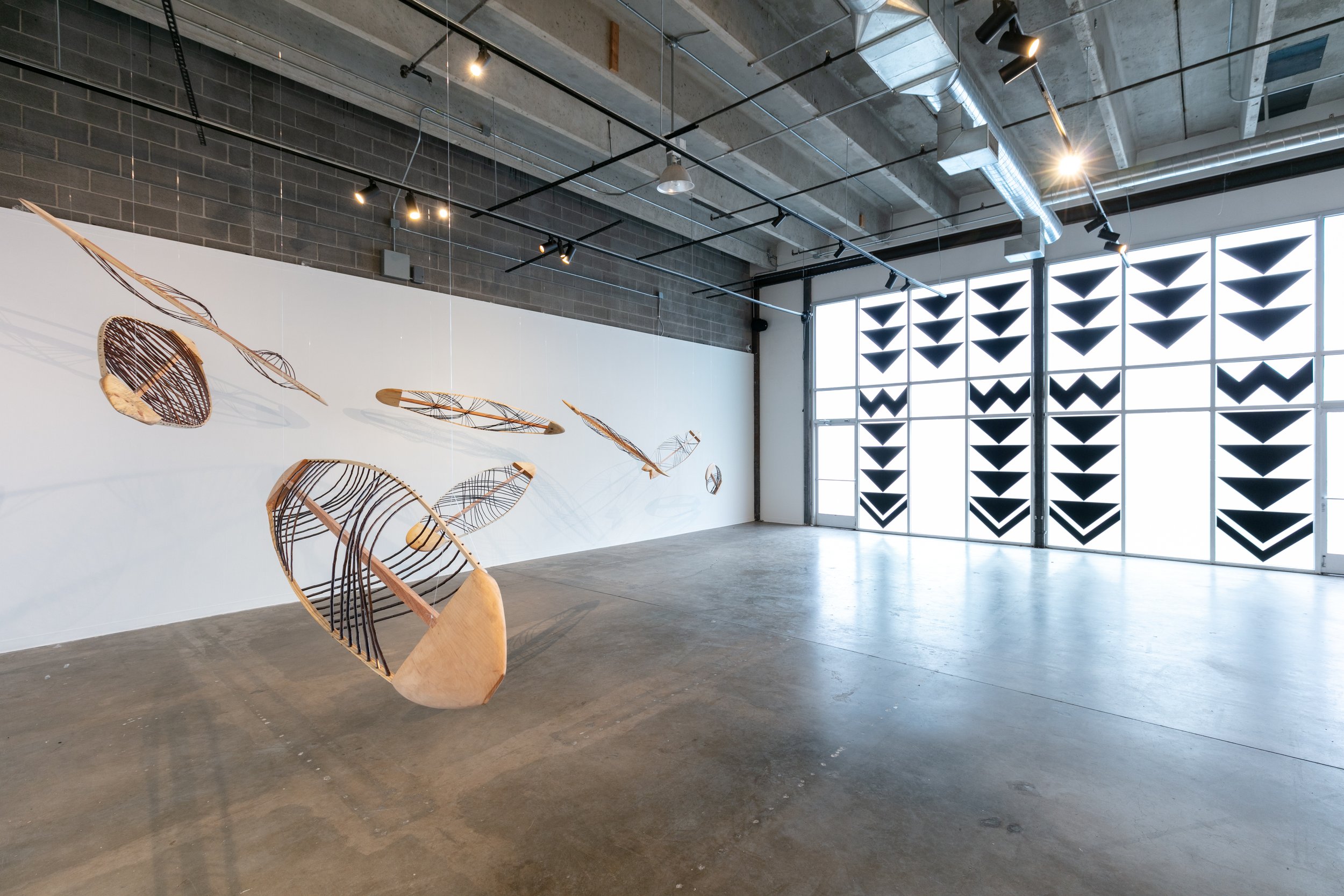Ni Sin Mo’ Meh / To Weave Water
Ni Sin Mo’ Meh / To Weave Water is a body of work that builds on the cultural connection between the Native Hawaiians or Kanaka Maoli of Sutter’s 1839 expedition and the Maidu families with whom they bonded. This connection is about more than the shared social position of being forced laborers in a particular colonial moment. It is also about Indigenous peoples from different parts of the world who share a philosophical and spiritual approach to water, specifically the movement, elements, and rhythm of water. Willow sourced from Chico, California in Mechoopda territory is used in this work not only because of its traditional weaving capacity but also because of its medicinal healing capabilities and connection to mo’meh/water.
In 1839, in the company of an expedition led by Swiss and German settler John August Sutter, ali’i (Native Hawaiian royalty) Edward Mahuka (Kanaka Maoli) along with eight other ali’i Kanaka Maoli came to the Mechoopda village, now known as Chico in what was at the time Mexican territory. Sutter’s goal was to establish a fort against Russians, Indians, Americans, and British, employing Maidu and Native Hawaiians as laborers in the project. Traces of gold found at Sutter’s fort would subsequently stimulate the Gold Rush. Sutter would go on to found Sacramento, ruling over laboring Indians through fear, massacre, enslavement, and subjugation in his pursuit of territorial power.
In 2010, while visiting relatives in our tribal cemetery, I came across a group of Sandwich Island headstones. One reads Ed Mahuka, March 2 1895 age 59 years Nation of Sandwich Islands. On top there are two hands clasped in a handshake. Ed, along with the other Kanaka Maoli, chose to live in our Mechoopda village as it was culturally similar to the life they had left behind in the Sandwich Islands. Many never returned to Hawai’i. They started families with Mechoopda people. Their children spoke Hawaiian and Konkow, the Mechoopda language.They learned the Mechoopda weaving techniques that emerge out of the relationship with the landscape. Mele’ Kai-Nuha Ke’a’a’la, also known as Mary, baptized as Maria Guadalupe, and the daughter of loan-a Ke’a’a’la or John Kelly and Sow-with-kee-nih (Mechoopda), was one of these children. As a young woman, Mele’ attended the 1881 visit of King David Kalakaua in Sacramento. After reciting her imoa (ancestral lineage), the King recognized Mele’ as kin and guardian of the King’s Kahili. At the age of about 17 Mele’ aka Mary returned to Hawai’i for about 5 years, and later, upon returning to San Francisco as a member of Queen Lili’uokalani’s retinue, requested to visit her Mechoopda village. She stayed, married, and worked at the Bidwell Indian School. In her later years, she watched over King Kalakaua’s body after he unexpectedly died during a visit to San Francisco. Upon her return to Mechoopda, she married a second time, to John Azbill, with whom she had children, the descendants of whom to this day integrate regard for their Kanaka ancestors in our ceremonies and ways of life.
REDLINE, Denver CO, 2023
Curated by : Louise Martorano
Photos by : Wes Magyar








